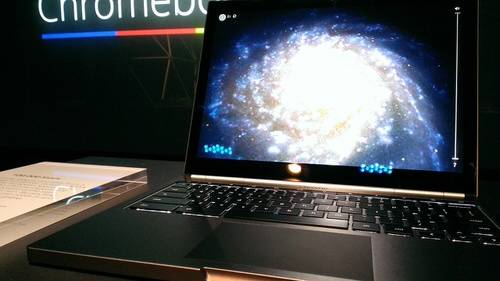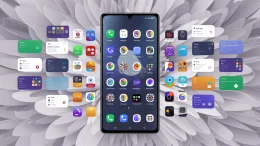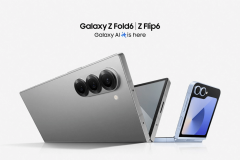
When they were introduced, Chromebooks made sense as a Google-branded evolution of the netbook for the tablet shy. But in 2013, consumers still don’t understand why there are so many versions of Android – much less what Google’s Chrome OS is or who it’s for. With the Chromebook Pixel, Google’s cloud-happy notebooks have created a full-on identity crisis.
(See also Google Chromebook Pixel: Bold, Beautiful And Very, Very Expensive)
Chromebooks Are Already Confusing
Following a leaked video and a typically detail-sparse report from The Wall Street Journal, Google has launched the Chromebook Pixel, an HD touchscreen notebook that will run on its Chrome operating system and retail starting at $1,299. The Pixel, with its high price and Google-built bare bones operating system is an odd bird. With a 239-pixels-per-inch display, the aptly-named Pixel one-ups Apple’s 13″ Retina MacBook Pro and its (paltry!) 227 PPI seemingly just for the hell of it.
Oh, and it’s a touchscreen, too, meaning you can smear your fingerprints all over that beautiful display.
The touchscreen means that beyond “taking on” the Retina MacBooks, Google’s Chromebook Pixel will also compete directly against Microsoft’s over-hyped, overpriced Surface tablets. But for all the buzz around hybrid devices that blur the line between notebooks and tablets (Lenovo Yoga, anyone?), consumers don’t seem to have the same hunger for them that they have for “pure” tablets.
The advent of the touchscreen notebook was a weird side effect from 2010-era iPad panic – there’s no evidence that consumers even want a device that combines the power of a laptop with the finger-friendliness of a tablet. And if there was, a pricey notebook with a kajillion pixels running on the hamstrung Chrome OS probably wouldn’t be it.
Missing The (Price) Point
Want a powerful notebook with a (pretty) nice screen for around $1,200? Buy the $1,199 13″ MacBook Air. Want to spend a little less for a slightly weirder device, or hung up on Windows 8 for some reason? Buy a Surface Pro. Drunk? Buy an Ultrabook!
Google has gained market share in recent times by offering well-built, affordable alternatives. Android tablets like the Nexus 7 and even existing entry-level Chromebooks can chip away at the competition because Google can afford to undercut the its competitors on price – the most important spec of all. The Chromebook Pixel seems to have forgotten that lesson.
At $249 and $199, the existing Chromebook line is a smartly priced alternative for users heavily invested in Google’s cloud ecosystem. Starting at $1,299, Google’s touchscreen Chromebook Pixel can only hope to attract inebriated would-be power users who wandered into the wrong aisle of Best Buy.
On the Venn Diagram of people who need a serious computer and people willing to put up with the limitations of the Chrome OS, that little center slice is altogether empty.
Photo by Mark Hachman.

















